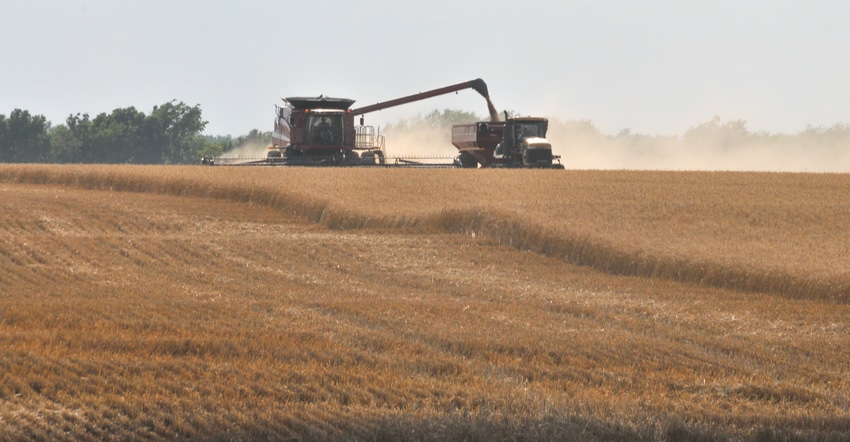
Widespread rain slowed down wheat harvest and provided sufficient water to improve drought conditions somewhat during the week of June 18. But the relief did not come for the hardest-hit counties in central Kansas, which largely missed the rains.
About a third of the state remains in moderate to extreme drought with the extreme category covering all or parts of 11 counties: Harper, Kingman, Sedgwick, Harvey, Reno, Lyon, McPherson, Marion, Chase, Morris and Wabaunsee.
In the area that got little-to no rain, the wheat harvest has moved rapidly to conclusion with general reports of lower yields and higher protein than normal. In areas where rains were heavy — Scott City received a 7-inch downpour that resulted in flooding — the wheat fields were still too wet to harvest at the end of the week.
Severe drought covers most of southwest, south-central and central Kansas. The National Weather Service in Wichita still had a chance of rain in the forecast for the weekend.
Southern Colorado is in even deeper drought than Kansas, with two-thirds of the state in moderate-to-exceptional drought. Extreme and exceptional drought cover more than a third of the state with the worst conditions in the southwest and a sliver of south-central Colorado.
Oklahoma also continues to be in drought with more than half the state in moderate to exceptional drought. The worst conditions are in Major, Woodward and Cimarron counties. Drought is also worsening in northern Missouri and creeping into southern Iowa.
The continuing drought is bad news in a variety of ways for the cattle industry as more than 20% of the major hay-growing area of the country is experiencing drought, which has reduced forage supplies to critical levels.
Kansas has been in a hay shortage for months after the dry winter reduced forage cover crops, forcing ranchers to use more hay to keep cattle fed.
The three-month outlook for July, August and September from the Climate Prediction Center is not exactly promising either. Most of the area with the worst drought is forecast to have temperatures above normal for the 90-day period.
On a more promising note, however, all of Kansas and most of Oklahoma and west Texas have an equal chance of above- or below-normal precipitation, while much of Colorado has a chance of above-average rainfall.
About the Author(s)
You May Also Like




